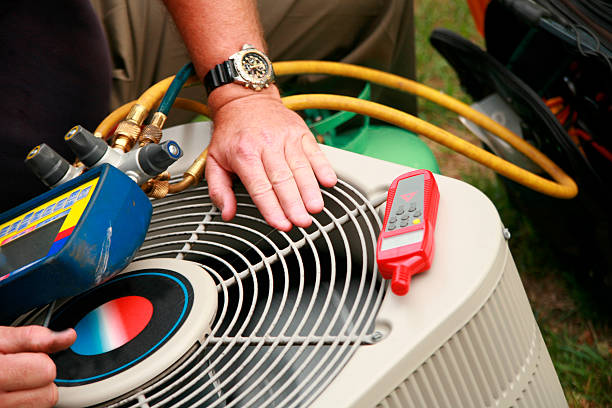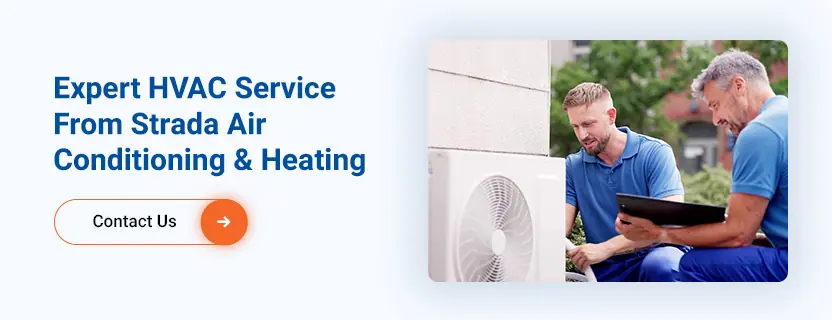Specialist Tips for Successful Air Conditioning Installation Brownwood TX
Specialist Tips for Successful Air Conditioning Installation Brownwood TX
Blog Article
The Relevance of HVAC Installation: Key Considerations for a Comfortable Indoor Atmosphere
The setup of an A/c system is an essential element in attaining a comfy and energy-efficient interior environment. Factors such as the suitability of the system for certain structure requirements, proper sizing to circumvent ineffectiveness, and the proficiency of contractors for a quality setup play essential functions. The adoption of innovative technologies can substantially boost system performance.
Selecting the Right System

When selecting an a/c system, it is crucial to examine the capacity required to successfully heat or cool the area without exhausting the system, which can cause raised wear and operational prices. Consulting with a specialist cooling and heating specialist can supply important understandings right into choosing a system that aligns with both the building style and the anticipated usage patterns of the structure.
Furthermore, considering the combination of smart innovation can enhance system administration and monitoring, offering better control and potential expense savings. By meticulously assessing these factors, one can make sure the selection of an a/c system that not just fulfills prompt demands however additionally contributes to long-term operational sustainability and passenger convenience.
Recognizing Power Performance
Understanding power performance is necessary when thinking about a Cooling and heating installation, as it straight impacts both the environmental footprint and the operational costs of the system. The performance of a Cooling and heating system is normally suggested by ratings such as SEER (Seasonal Power Performance Ratio) for air conditioners or AFUE (Yearly Fuel Utilization Efficiency) for furnaces.

Purchasing an energy-efficient HVAC system not only equates to set you back savings yet also adds favorably to ecological preservation by decreasing greenhouse gas emissions. Additionally, many jurisdictions provide rewards or discounts for the installment of high-efficiency systems, additionally improving their monetary charm.
When examining energy performance, think about innovative attributes such as variable rate electric motors, smart thermostats, and zoning capacities. These advancements enhance the system's capacity to readjust to differing demand, therefore maximizing energy usage. It is important to seek advice from with HVAC experts that can give understandings into the very best choices tailored to specific environment conditions and usage patterns, guaranteeing maximum performance and comfort.
Importance of Proper Sizing

Alternatively, an undersized cooling and heating system will have a hard time to reach the desired temperature, particularly during extreme climate problems. This can cause continuous operation, leading to greater energy costs and potential overheating you could try here of system components. Additionally, insufficient sizing can result in inconsistent temperature distribution, causing certain areas of a structure to be as well trendy or also warm.
To achieve the appropriate sizing, a thorough load calculation is necessary. This entails analyzing numerous factors such as the building's square video, insulation degrees, home window types, and regional environment conditions. By precisely figuring out the heating and cooling requirements of an area, heating and cooling specialists can advise systems that make certain efficient procedure, minimized power intake, and boosted indoor comfort.

Making Sure High Quality Installation
A seamless heating and cooling setup is the cornerstone of a system's long life and efficiency. Guaranteeing top quality setup includes thorough focus to information, adherence to sector requirements, and using knowledgeable professionals. The process begins with picking a licensed and skilled HVAC service provider. This specialist must have in-depth expertise of varied systems and be skilled at analyzing the specific needs of the building.
Proper setup goes past simple positioning of equipment. It involves exact calibration to ensure ideal air flow, efficient power usage, and consistent temperature level distribution. This includes precise ductwork installation, making sure connections are protected and leak-free, which is vital for keeping system effectiveness and interior air quality.
Additionally, the application of advanced analysis devices during installment can detect potential issues early, preventing pricey repairs and extending the click here for more life-span of the system. The service provider needs to likewise ensure that all components are compatible which the system adheres to neighborhood building ordinance and laws.
Regular Maintenance Practices
When the foundation for a high-performing HVAC system is developed via high quality installment, the emphasis needs to move to routine maintenance practices to ensure continued performance and integrity. Routine upkeep not just extends the life expectancy of the system however likewise improves interior air top quality, reduces energy intake, and avoids costly fixings. Crucial maintenance tasks consist of consistently transforming air filters, cleaning evaporator and condenser coils, and evaluating the system for leaks or obstructions.
This easy task can dramatically enhance air circulation and system efficiency. In addition, expert specialists must inspect the system annually, checking for refrigerant degrees, electric links, and general system efficiency.
Focus to ductwork is likewise crucial; securing and cleaning ducts routinely protects against air loss and contamination. Applying a maintenance timetable makes sure that small concerns are addressed prior to they intensify, securing the system's operational honesty. By sticking to these maintenance techniques, property owners can enhance their HVAC system's performance and keep a comfy interior setting year-round.
Final Thought
By choosing page a suitable system customized to specific structure demands, understanding energy effectiveness, and making sure appropriate sizing, ineffectiveness can be decreased. The participation of knowledgeable professionals guarantees quality installation, while the combination of sophisticated technologies improves system efficiency and tracking.
A number of types of A/c systems are available, including split systems, crossbreed systems, duct-free systems, and packaged home heating and air systems, each with distinct advantages and constraints.
Comprehending energy performance is necessary when considering a Cooling and heating installation, as it straight affects both the ecological impact and the operational expenses of the system. The efficiency of a Cooling and heating system is usually shown by rankings such as SEER (Seasonal Energy Performance Ratio) for air conditioners or AFUE (Annual Fuel Utilization Performance) for furnaces (Heating Contractor in Brownwood TX).As soon as the foundation for a high-performing HVAC system is established through quality installment, the focus should change to normal upkeep methods to ensure continued performance and reliability. Additionally, specialist specialists should inspect the system each year, inspecting for cooling agent levels, electric connections, and overall system performance
Report this page